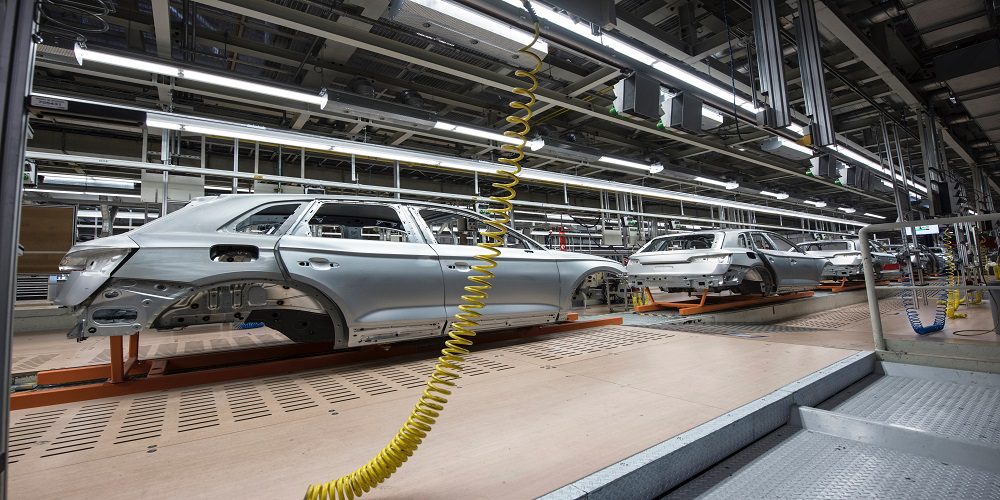Introduction
Rev up your engines, fellow automotive enthusiasts! Join us on an electrifying journey as we uncover the colossal realm of the world’s largest automotive industry. From high-speed sports cars to robust 4x4s, this dynamic sector has been a driving force in global transportation for over a century. In this exhilarating exploration, we’ll delve into staggering statistics, groundbreaking innovations, and captivating insights, revealing why this industry continues to dominate the roads.
Unveiling the Dominant Force: China’s Automotive Triumph
The automotive industry stands as a powerhouse in the global economy, with millions of vehicles rolling off production lines each year. Yet one nation shines as the undisputed leader—China. Emerging as the world’s largest automotive market and producer, China manufactured over 25 million vehicles in 2019, comprising almost 30% of the global production. This remarkable achievement, nearly double that of the United States, cements China’s status as a giant in the automotive realm. What sets China apart, and how did it ascend to this influential position? Let’s dive into the key factors that define China’s dominance in this dynamic sector.
Top Countries in the Global Automotive Arena:
The automotive industry spans the globe, with certain countries playing pivotal roles in shaping its trajectory. Let’s take a closer look at the top countries commanding the largest automotive industries, exploring the factors that make them key players on the world stage.
1. China:
A. Annual production of over 25 million vehicles.
B. Factors driving growth include rising income levels, urbanization, and government policies promoting domestic consumption.
C. Global expansion through strategic partnerships and acquisitions solidifies China’s influence.
2. United States:
A. Annual production of around 11 million vehicles.
B. Established automotive giants like General Motors, Ford, and Fiat Chrysler Automobiles.
C. Strong infrastructure, a skilled workforce, and technological advancements contribute to its global standing.
3. Japan:
A. Annual production of around 9 million vehicles.
B. Home to renowned brands like Toyota, Honda, and Nissan.
C. Emphasis on high-quality cars, advanced technology, and significant exports.
4. Germany:
A. Annual production of around 5 million vehicles.
B. Birthplace of luxury brands like Mercedes-Benz, BMW, and Audi.
C. Strong infrastructure, a skilled labor force, and a focus on innovation contribute to Germany’s automotive success.
5. South Korea:
A. Annual production of around 4 million vehicles.
B. Notable manufacturers like Hyundai and Kia.
C. Emphasis on research and development, introducing innovative technologies in hybrid and electric vehicles.
6. India:
A. Annual production of around 4 million vehicles.
B. Rapid growth propels India to become the world’s fourth-largest automobile market.
Key Players Shaping the Automotive Landscape:
In a sector of colossal proportions, certain players stand out as the driving forces behind innovation and production. Let’s spotlight some key players and their impact on the ever-evolving automotive industry.
1. Toyota Motor Corporation:
A. Consistently ranked as the world’s largest automaker.
B. Emphasis on innovation, quality, and reliability.
C. Leader in hybrid electric vehicle technology.
2. Volkswagen Group:
A. German multinational with popular brands like Audi, Porsche, and Bentley.
B. Annual production of over 10 million vehicles.
C. Strong brand portfolio and advanced vehicle technology.
3. General Motors:
A. Headquartered in Detroit, USA, with an annual production of around 8 million vehicles.
B. Owners of popular brands like Chevrolet, Buick, and Cadillac.
C. Known for constant innovation in vehicle design and technology.
4. Ford Motor Company:
A. Pioneering automaker founded in 1903.
B. Global presence with an annual production of around 6 million vehicles.
C. Innovations like the assembly line revolutionized the industry.
5. Honda Motor Co., Ltd.:
A. Japanese multinational with an annual production of over 5 million vehicles.
B. Focus on fuel-efficient vehicles and advanced technologies like hybrid engines.
Economic Impact of the Automotive Colossus:
The automotive industry’s influence extends far beyond the assembly line, shaping economies and impacting various facets of our lives. Let’s delve into the economic impact of this colossal industry and its effects on employment, GDP, tax revenues, technological innovation, and international trade.
1. Employment Opportunities:
A. Directly employs around 9 million people globally.
B. Indirectly supports jobs in the supply chain, dealerships, repair shops, and logistics.
C. In countries like Germany and Japan, the sector accounts for more than 5% of total employment.
2. Contribution to GDP:
A. A significant contributor to a country’s GDP.
B. In countries like Japan and Germany, the automotive sector accounts for a substantial portion of total industrial output.
C. Expected growth in GDP contribution with increasing demand in emerging economies.
3. Tax Revenues:
A. Generates substantial tax revenues globally.
B. Various taxes involved in the production process contribute to government income.
C. In the US alone, the automotive industry paid over $68 billion in federal taxes in 2019.
4. Technological Innovation:
A. A major driver of technological innovation.
B. Heavy investments in research and development lead to advancements in electric and hybrid vehicles, autonomous driving systems, and more.
C. Creates a ripple effect on other industries, fostering new job opportunities and economic growth.
5. Trade:
A. A significant contributor to international trade.
B. It involves sourcing raw materials globally and exporting finished products to diverse markets.
C. Plays a crucial role in shaping global economic interconnectedness.
Conclusion:
The world’s largest automotive industry stands as a linchpin in the global economy, influencing technological advancements, international trade, consumer behavior, and environmental sustainability. Its continuous growth and innovation extend beyond mere car production, shaping our daily lives and steering the future of transportation. As we navigate this automotive landscape, the journey ahead promises to be an exhilarating ride through uncharted territories of innovation and global impact. Buckle up for the road ahead!



































